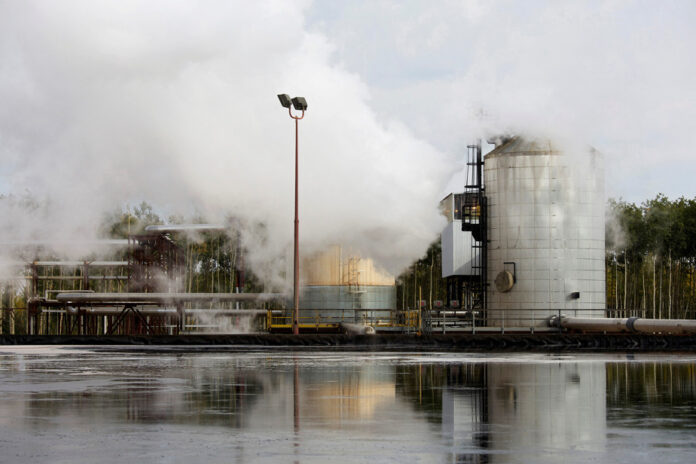(Calgary) New modeling from the Canada Energy Regulator (CER) suggests oil production in the country will plummet by 2050 if the planet meets the Paris goal of net-zero greenhouse gas emissions. course of this horizon.
The report, released on Tuesday, presents for the first time the long-term outlook for Canadian energy using the goal of net zero emissions as a benchmark.
It paints a picture of a radically different energy sector, especially if the world manages to meet its 2050 climate goals and keep global warming to 1.5 degrees Celsius.
In this scenario, where national and global climate policies succeed in reducing the planet’s net emissions to zero, Canada’s energy regulator says global fossil fuel use will decline by 65% between 2021 and 2050.
This would lead to a collapse in global oil prices, which would fall to $35 per barrel by 2030 and $24 per barrel by 2050, according to the report.
It concludes that because of these very low prices, Canadian crude oil production would fall to 1.2 million barrels per day by 2050, or 76% less than in 2022.
“In a net-zero world, not just for Canada, but for the rest of the planet, the supply and demand dynamics that we see today will be very different in the future,” said Jean-Denis Charlebois, chief economist of the REC, told reporters on Tuesday.
“As the demand for hydrocarbons will be less, hydrocarbon producers will need to be increasingly efficient in managing their costs in order to remain competitive,” he added.
The regulator also modeled two other scenarios, one of which predicts that Canada will achieve net zero by 2050, but that large developing countries like China and India will progress more slowly.
Under this scenario, world oil prices will likely remain above $60 per barrel until 2050, while Canadian oil production will decline by only 22%.
The report also looked at what would happen if the status quo remains, which assumes that there are no additional efforts to reduce emissions beyond what is already in place, and that there are no other attempts to achieve the Paris climate goals.
In this scenario, Canadian oil production would increase to 6.1 million barrels per day in 2050, 20% more than in 2022.
Mr. Charlebois clarified that the three scenarios presented are models and not predictions, and that the regulator has not made any predictions about which one is most likely to come true.
“Ultimately, we don’t comment or offer an opinion on the likelihood of this happening,” he said. It remains to be seen if things will play out that way in the real world. »
But Charlebois acknowledged that under a global net-zero scenario, rapidly falling oil prices would force Canadian companies to drastically cut costs to stay profitable.
This, he said, could put pressure on higher-cost producers, particularly oil sands companies, which are more carbon-intensive than conventional producers and face higher costs to reduce their emissions.
“In both net-zero scenarios, we see conventional production holding up better than oil sands production,” Charlebois argued.
The New Paths Alliance, a consortium of oil sands companies, has committed to zero greenhouse gas emissions by 2050.
However, it has indicated that the carbon capture and storage network it wants to build to achieve this goal will cost 16.5 billion.















